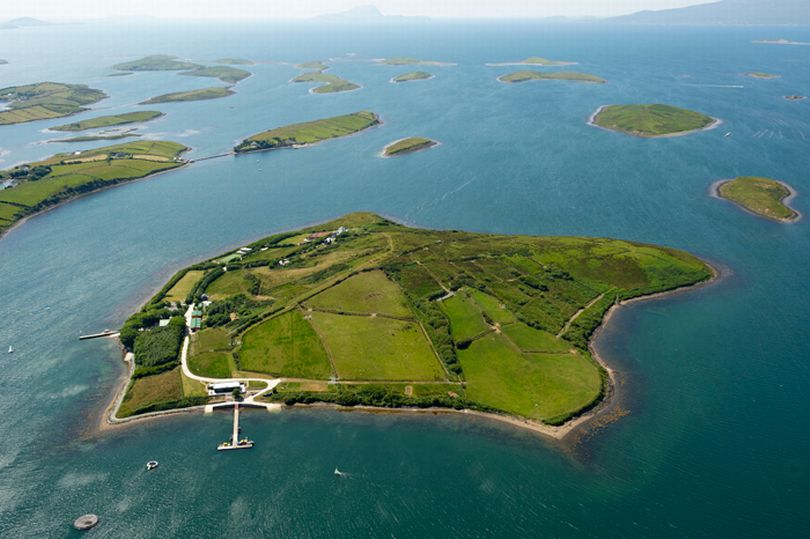
A post about preparing for bereavement
Readers of this blog will recall my earlier posts about preparing for our own death, thinking about those left behind, and how some forethought can save our families much distress and perhaps conflict in the aftermath of our demise.
Would it be too much to suggest that we should take practical steps, not just for our own death, but to prepare for the death of a relative or loved one? At the risk of shocking you, I propose to do exactly that in this post, setting out simple but effective tried-and-tested steps that can make the process of bereavement more bearable that it otherwise would be.
No matter how we have prepared, the moment of a relative’s death comes as a paralysing shock. Emotions, good or bad, are in turmoil. It is not the time for clear thinking and decisive action.
That is why we should anticipate the event and plan for it.
The moment of death
Most deaths occur in hospitals, nursing homes, or at home, so I will focus on them. For those present at the deathbed, there are some simple steps that may be taken to make last moments more meaningful.
In the past, relatives would gather around the bed of a dying person with a prayer book, bible, rosary…and their supper. They prepared for the ‘long haul to an unknown moment’, sometimes for weeks on end.
Life and dying may now be more clinical, but not necessarily different. We still strive to be present when death occurs, not in the cafeteria or at the coffee machine. We want to have something to say, even if we cannot find the words.
Some preparation may be enormously helpful. I am not suggesting that tables of victuals and flagons of wine are laid out – but something to sustain the wait is essential. Pick up our relative’s favourite book and you certainly have something familiar to read to them. For those with smart phones, pre-load a simple, dignified group message to share the fact of death when it comes, without having to face its awful implication.
Immediately after someone dies
A home death is the greatest kindness for both the deceased and those attending them. Time is on your side. Relatives may come, go, or stay; so each is supported whilst simultaneously they can fulfill their own moment of bereavement. Hospitals and nursing homes are less tolerant, and relatives report pressure from staff for the deceased to be moved with final moments being snatched away by administrative imperatives.
It follows that such limited time must be used effectively. Following the moment of death, a professional carer spoke of the custom to open a window to allow the spirit to leave. This simple ritual of beauty served to elevate the moment. It was a wise use of time and imagination providing closure, and an enhanced lasting memory.
The practical steps
After peremptory moments of sympathy, ‘What is the name of the undertaker?’ is the first question that relatives are frequently asked by hospital bereavement staff or care home administrators. The bed needs to be vacated; visitors will be distressed; the mortuary or chapel of rest is full; release of the body must be authorised.
If no other preparations are to be made, an answer to this simple question is essential. How much better to have made contact with a chosen funeral director, spoken about proposed arrangements for burial or cremation, shared the personal details of the deceased, and provided advance authority to remove the body to their premises? All that is then needed is a digital copy of the Medical Certificate of Cause of Death which will have been completed by a clinician.
Bear in mind that during Covid-19, options are limited, ceremonies being limited. For those that have chosen the option of cremation, many are deferring their mourning to a time when ashes may be scattered at a family occasion unrestricted by lockdown, to be followed by a memorial gathering to include friends and associates.
Registering the death
Covid-19 has limited our access to Registry Offices, substituting a 30 minute telephone or online interview. Here the registrar will require particular information which can take effort to acquire. You might wish to note down answers to these details in advance of the appointment:
- Copy Medical Certificate of Cause of Death (MCCD).
- Date of death.
- Place of death – the address including postcode or details of the hospital or nursing home. If in an ambulance, the locality of the vehicle when the death occurred and the intended destination.
- Name by which the deceased was known as at the time of death, their maiden name, and any other name they may have used during their life.
- Their gender.
- Date of birth, and town and county of birth, preferably from copy birth certificate.
- Occupation by way of trade, and whether working or retired.
- Home address at which they lived before removal to hospital or care home.
- Name and address of the care or nursing home where they lived before death.
- NHS number (from their medical card), and National Insurance number.
- Name, address, status and date of birth of next of kin.
- Name, address and contact details of undertaker, and the location at which burial or cremation is to take place.
‘Tell us Once’
UK Government provides a service through which central and local authorities may be informed of a death. Other paid services are available, but I recommend the free portal here.
To access the service you will need the reference number on the death certificate. This will be provided by the registrar of deaths. Additionally, you should know the answer to the following questions:
- Has the deceased filed a tax return in the last 12 months? If not, you may answer ‘NO’ to informing HM Revenue.
- What state benefits, including state pension did the deceased claim or receive prior to their death?
- Were they in receipt or eligible for a MOD pension or other payments?
- Were they in receipt of local authority support from Adult Care or social services and the name of the providing council?
- Did they use library services?
- Did they have a license to drive, what is their driver number, did they have Blue Badge service?
- Did they have a passport, and what is its number?
Bills, banking and utilities
Hopefully, in their lifetime the deceased will have read my previous post about the importance of making a Will and ‘Going Away Bag’, and shall have appointed executors to handle their financial affairs after their death.
However frequently a spouse or partner is left to pick up the pieces.
My advice for them is to copy or photograph the Death Certificate when it arrives, thus providing a digital copy that may accompany short covering letters informing private companies that are not covered by the ‘Tell Us Once’ scheme. Note that the banks operate a similar service here.
For survivors, there are significant advantages in digitizing. To do this using the latest copy of the utility bills – gas, electric, water, telephone and broadband, council tax – open an online account. Whether to relieve a surviving spouse or partner of bill management, or to facilitate before selling a house, this one step will provide quick, remote access to all of the routine tasks.
Food for thought
Collectively, we spend inordinate amounts of time anticipating life events that never happen. Death is the one inevitable event, and it is neglected when it comes to life planning. Perhaps that it is ‘not our problem’ is a reason….unless following the death of our own relative or loved one, it does fall to us to step up to the task?
Whilst an advert may appear at the foot, this blog is neither monetarised, nor endorsing any product












